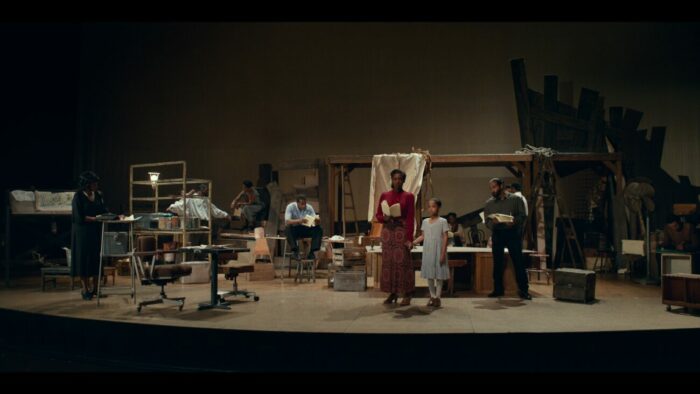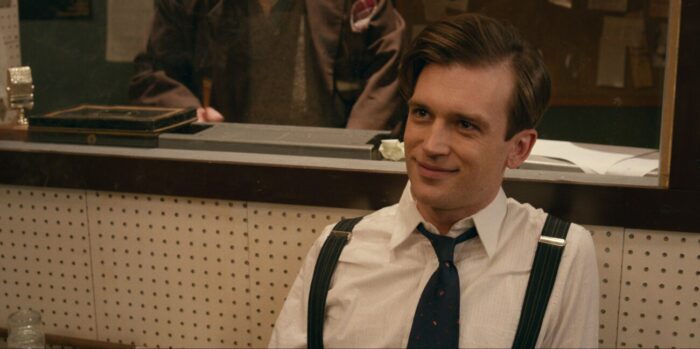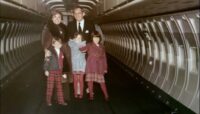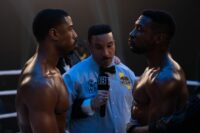The tale of the “Voodoo Macbeth,” as it came to be known, colloquially over the years, is as timely as ever. At a cultural moment when American schools face censorship over nearly any attempt to integrate their teaching of history, a production like the Federal Theatre Project’s 1936 Macbeth—directed by a 20-year-old Orson Welles, relocated from Scotland to the Caribbean, and featuring an all-black cast—managed to bring together practitioners from different races in pursuit of a common goal with a radical reinvention of a canonical work that triumphed over censorship and won over audiences with thunderous acclaim. “Shakespeare in Harlem,” as it was called, was a riotous success.
The Welles Macbeth took all kinds of risks. Lighting, costume design, casting, even the relocation of the play from Medieval Scotland to the twentieth-century tropics—which allowed for the play to focus on vodou, rather than witchcraft—all of it was a gamble. It was a Depression-era project funded by The Works Project Administration’s Federal Theater Project, with one arm of its effort, “The Negro Theatre Unit” producing both contemporary and classical drama. That it was a government-funded, massively collaborative, inherently risky venture made its success all the more remarkable: the production was not only one that became a landmark of African American theatre, but also a cultural moment on which the future of cinema pivoted, as Welles followed up his uncanny theatrical success with his radio success War of the Worlds and then, soon, co-writing, producing, directing and starring in his first film, Citizen Kane—ranked as one of the greatest films ever made—at age 25.
A new narrative feature film from the University of Southern California’s School of Cinematic Arts, Voodoo Macbeth is based on the story of Welles (Jewell Wilson Bridges in his feature film debut) and his fellow artists as they set out to produce their own Shakespeare in Harlem in 1936. Among them are the legendary Broadway actress Rose McClendon (Inger Tudor), who will play Lady Macbeth, and producer John Houseman (Daniel Kuhlman). Voodoo Macbeth focuses more on the process of the production—its relocation to the Caribbean, its casting of nonprofessional actors, community pressures, scene blocking, and even a reactionary conservative congressman bent on shuttering the play for what he calls its “communist propaganda.”
As one might imagine, the production is no cakewalk: a good backstage drama will never shy away from conflict and crisis. Welles is prone to drink, drugs, and anger; his wife, Virginia (June Schreiner), stews at being shut out of the production, having invented the germ of the idea in the first place. McClendon is suffering a serious illness in secret. Maurice (Jeremy Tardy) is harboring a gay crush on a castmate. A preview performance ends abruptly in disaster, with a shamed Welles in blackface (yes, in blackface, clearly a nod to his later Othello, as I could not find any inkling of his having done so for Macbeth) and stabbed by an enraged protestor (also invented, though Welles was reportedly threatened by a knife-wielder and spared by an intervening Canada Lee).

The events make for good drama, and the film’s production is itself a collaborative effort in the spirit of the Harlem theatre of the 1930s. In association with Warner Bros., Voodoo Macbeth is the first theatrical release from USC Originals: its credits list 10 directors, eight writers, and three producers, and its press notes indicate the film’s origins in a writing room between collaborators and directors then finding a common vision for the production. The film is impressive in that regard: its sets, costume design, script, and cinematography all look of a whole, a period piece undertaken with all due seriousness and no risk or experimentation. Its run has already earned it over a dozen festival awards on its year-long run, and even for a collaborative academic venture like this to earn a theatrical release is its own kind of success.
At the same time, it’s hard not to feel that the story Voodoo Macbeth tells deserves a bit better. It’s as seminal a moment as any in African American theatre and a crucial moment in Orson Welles’ development as a cinematic auteur-in-training: soon he would synthesize his radical risk-taking, theatrical and radio acumen, and own innate storytelling genius in a groundbreaking first film. There’s little risk in this film: in fact, it feels so safe and stolid it borders on the generic. There’s nothing expressly cinematic about the film at all, but rather a perfectly competent succession of scenes depicting Welles, McClendon, and their compatriots taking on their battles.

As McClendon, Inger Tudor is the standout in the cast, subduing her own character’s illness to mentor Welles through the production with a knowing confidence and gravitas. Jeremy Tardy too is excellent as Maurice, a talented and trained actor who must not only perform his own role but mentor others less prepared, all the while closeting his own desires. All of the actors (many of them more credentialed in the theatre than the cinema) adopt a noticeably stagey technique in line-reading, with bold and crisp enunciation exchanged in distinct turn-taking. As Welles, Jewell Wilson Bridges has a tough task. Welles has been played credibly by Jean Guérin, Vincent D’Onofrio, Liev Schrieber, Danny Huston, and most recently the excellent Tom Burke in Mank. (I am not counting Jack Black’s turn in Drunk History.) All of those actors enjoyed the advantage of playing a slightly older Welles than the 20-year-old who took on Macbeth in Harlem.

Bridges, though, does not only not seem like Welles in any discernable way (other than attempting to “act” like him), he does not appear to be within a decade of the young man’s tender 20. Bridges channels all of the requisite emotions—anger, despair, elation, uncertainty—in a more-than-game effort. But Bridges is a reedy man with a weedy voice and angular features: even at 20 Welles must have been 6’3″ and 200 pounds (he was reportedly over 6’0″ and 180 pounds at age 13!). Even despite the lack of physical similarity, Welles was known for his gloriously sonorous bass-baritone speaking voice. I’ll acknowledge that finding a young twentysomething with Welles’ reported charm, voice, and stature to play the role wouldn’t be easy, but many viewers’ assessment of Voodoo Macbeth will depend on the extent to which they accept Bridges as a 20-year-old Welles.
Would that a film could channel the extraordinary magic of the Federal Theatre Project’s 1936 Macbeth—a project that brought together artists from different races and origins to make a work of genius and changed the course of the 20th century—that would indeed be something. Could it do so with anything approaching the verve and daring Welles, McClendon, and their compatriots brought to their effort? Perhaps, but it would require some real risk from its makers, and somehow, somewhere, someone who could channel and depict the arrogance, confidence, swagger, and swoon of the 20-year-old Welles.
The original “Voodoo Macbeth” is lost to us today, except for historians’ accounts and a few brief minutes of archival footage. This Voodoo Macbeth is worth a watch for anyone interested in the history of theatre or cinema, and in an age when some think any examination of blackness is somehow part of a radical “woke” agenda, a timely reminder that government-sponsored artistic initiatives can indeed serve to educate and inform their populaces. And The Tragedy of Macbeth is still, as the Coen brothers proved last year, still full of vitality; that Shakespeare’s play could so inspire audiences even three hundred, and now four hundred, years later, is itself its own kind of witchcraft. Or, if you prefer, of vodou.
Voodoo Macbeth opens theatrically in New York and Los Angeles October 21, with other cities following.



